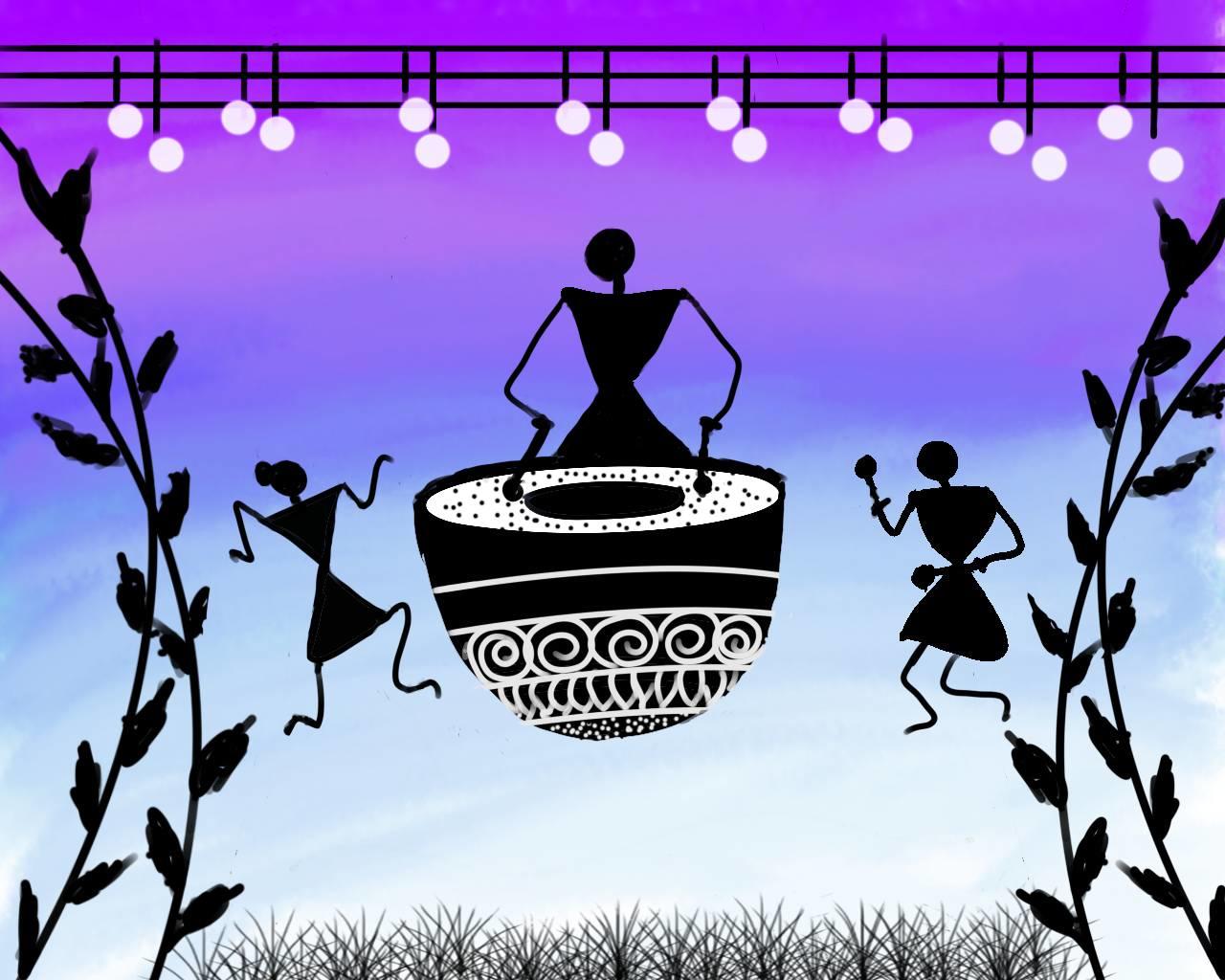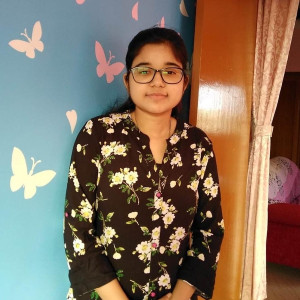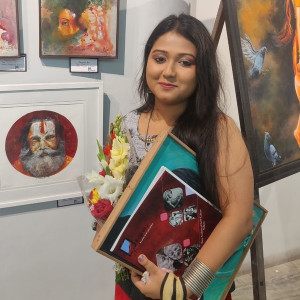The northern Sahyadri Range, which includes Indian cities like Jawhar, Palghar, Dahanu, Talasari, Mokhada, and Vikramgarh in Palghar district, is home to the tribe who created the magnificent Warli folk paintings. Maharashtra is where the warli tribal painting art form first appeared and is still widely used today. It is thought to be among the most ancient Indian folk arts in existence. The three primary geometric shapes used in Maharashtra folk art are the circle, triangle, and square.

Warli Painting UPSC Notes
Origin of Warli Art
Although the precise beginnings of this art form are unknown, Warli art can be traced back to the 10th century A.D. They employ three very simple geometric motifs in their incredibly basic wall paintings: a square, a triangle, and a circle. They used single words in their artworks. Their observations of nature are the source of the circle and triangle, with the circle standing in for the sun and moon and the triangle being formed from pointed trees and mountains. The square, which denotes a holy enclosure or a plot of land, is the only object that appears to follow a separate logic and to be human design.
Yashodhara Dalmia's book, Painted World of the Warli, states that these paintings had roots between 2500 and 3000 BCE and that they most closely resemble prehistoric cave paintings. Its visual similarity to these cave paintings strengthens the argument that they are prehistoric artworks. The art form of Warli is remarkably well-preserved, having been assimilated into tribal societies and transmitted through the generations.
An ancient tribal art form at risk of extinction is the Pithora style of art prevalent in Gujarat.
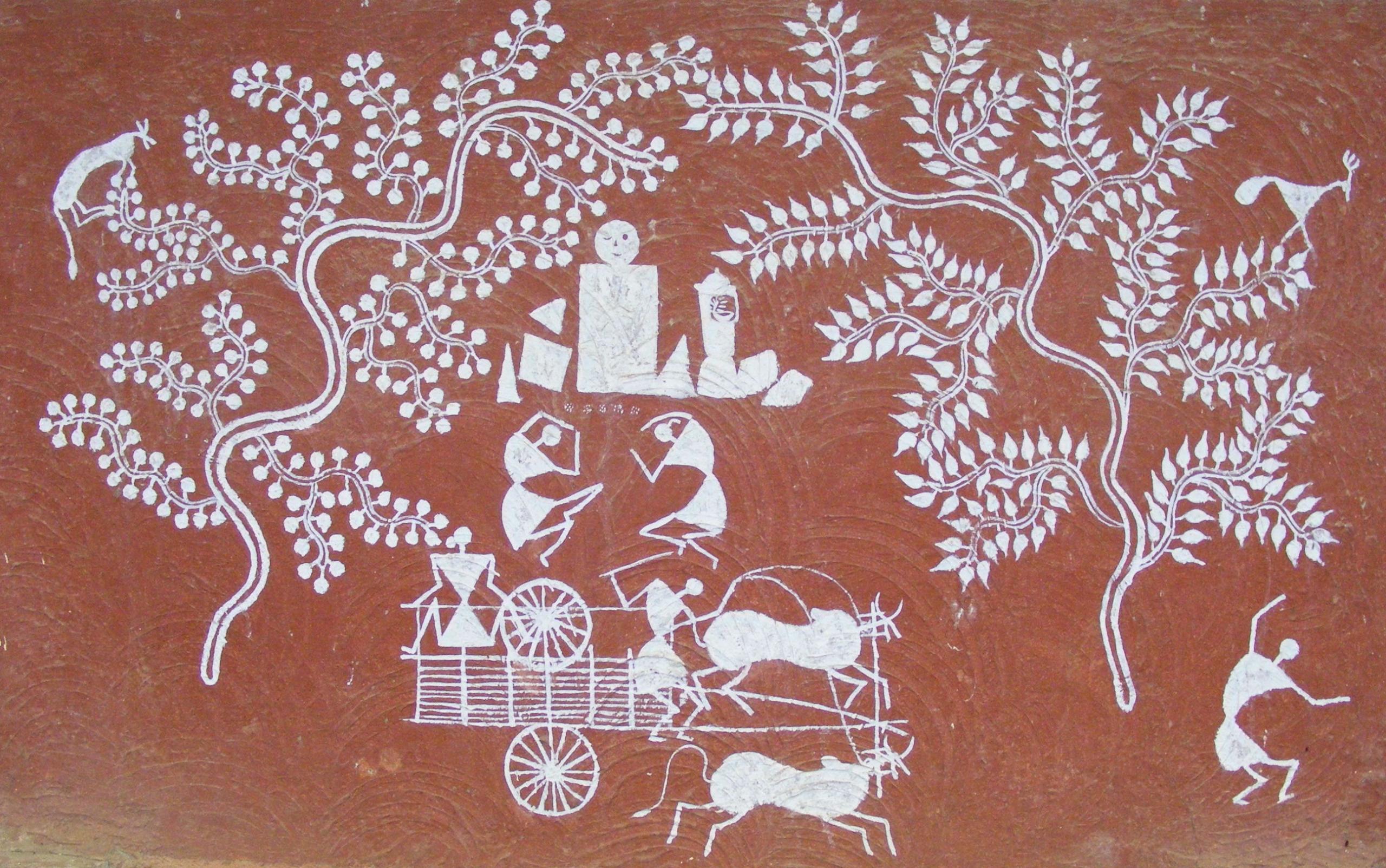
Preparing Warli Paintings
Raw Materials
In the past, warlas painted on the mud walls of their own homes. There is never tracing or drawing of design in this folk painting style. It is an artisan's creative visualization. Using a wooden stick, designs are painted directly onto walls. The design's background is a reddish-brown hue. Cow dung powder is used to paint the walls of houses, and geru powder is added for coating. Rice flour is used to make a white paste, which is then mixed with water and utilized for painting.
Discover the vibrant world of Madhubani paintings.
Painting Methodology
- A design is chosen.
- It is drawn straight onto paper or fabric without the need for tracing.
- A bamboo stick is a basic painting instrument that is chewed at the end to make it as flexible as a paintbrush.
- White paste is used to paint motifs on surfaces such as walls, clay pots, wooden objects, paper, and fabric.
- The human figure's body is first created by joining two triangles, and its hands and legs are then shown dancing. The final design is completed by painting the last few details.
- The reverse side of the cloth is used to iron it.
Colors
The soil, cow dung, and branches that make up the walls provide a reddish-ochre backdrop for the murals. The warli paint is exclusively white. Their white pigment is made of water and rice paste, bound together with gum. To make variants, natural colors such as geru, turmeric, kumkum, leaves, and colored flowers are taken, and gum from trees is extracted. The red color from Butea Monosperma (Palas) flowers is used to illustrate the existence of God Naradmuni and is a sign of departed souls. Black color is taken from charcoal and used to depict harsh soul. The color kumkum is associated with wealth. Pineapple is used to extract its yellow color.
Warli Painting Themes
The idea of Mother Nature is the foundation of Warli art, and natural elements are frequently the main subject. The tribe's primary means of subsistence is farming, hence they have a great deal of regard for the natural world and wildlife because of the resources they offer. Similar to how prehistoric paintings were created, warli painters are known to use their clay homes as backgrounds for their paintings.
Religious imagery, such as god images and symbols, is never used in Warli paintings. It talks about our reliance on and affinity with nature, portraying nature as a god. Warli paintings emphasize the deep social ties among the members of their community and show a sense of consistency in people. Real-world events and situations are depicted in paintings through elements like trees, animals, events, social gatherings, and human formations. Another way to visualize their traditional storytelling is through a painting by a Warli artist. These days, artists incorporate objects from the modern world, like trains, vehicles, bicycles, buildings, computers, and airplanes.
Three geometric shapes are used to create these simple paintings: a square, a triangle, and a circle. These forms are thought to represent several components that can be found in nature, including:
- The sun and moon are represented by the circle.
- Conical trees and mountains are represented by the triangle.
- The square is an artificial construct by humans that represents a holy area or a plot of land. Every ritual painting features a square known as the "chauk" or "chaukat" as its main subject.
Religion permeates all types of art in India, including the famous Pattachitra art of Odisha and West Bengal.
Male gods are rare in Warli paintings and are typically associated with spirits that have assumed human form. The main theme of warli paintings is shown by scenes of farming, fishing, and hunting. Folk dances and festivals are other frequent subjects in Warli art. Two inverse triangles linked at their tips are used in Warli paintings to portray people and animals. The pelvis is represented by the lower triangle, and the torso by the upper triangle. The universe's balance is intended to be symbolized by this perilous equilibrium. In addition to depicting ritualistic rituals, Warli paintings also show a variety of everyday activities carried out by villagers.
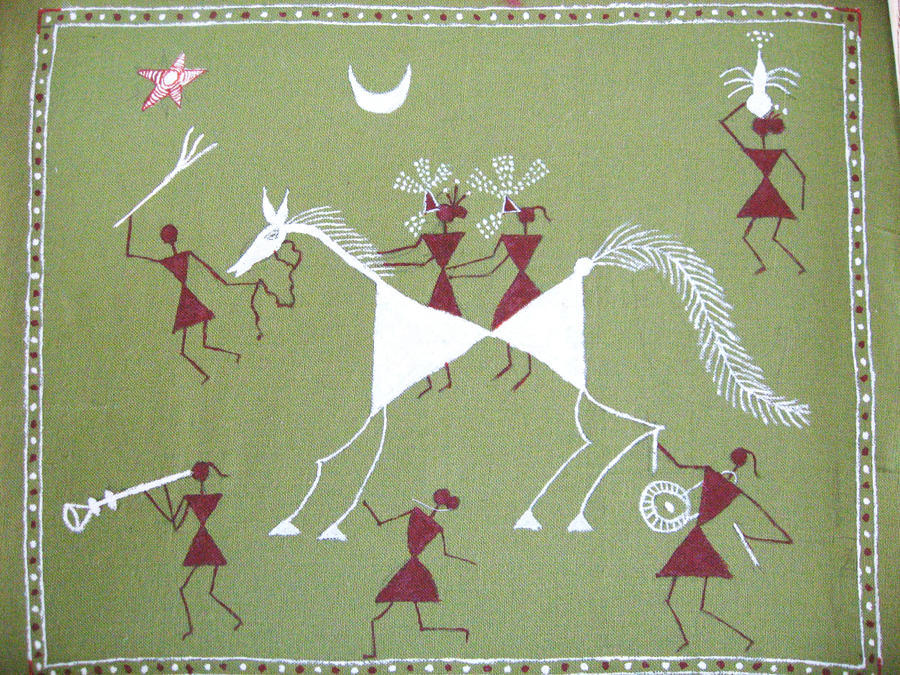
Importance of Warli Paintings
To the untrained eye, unassuming white Warli creatures painted on walls the color of red ochre might not seem like much. There is more to Warli than meets the eye, though, as you will discover upon closer inspection. For the Warli (Varli) tribes from the coastal and mountainous areas surrounding the borders of Gujarat and Maharashtra, it is not only a way of life but also an art form. This art form, which dates back to around 3000 BC, has a mysterious allure.
Fashion designers and home décor firms are big fans of the geometric patterns found in flowers, wedding rites, hunting sceneries, and other everyday activities. Gujarati and Maharashtra residents undoubtedly have a sentimental attachment to the art form because they witnessed it displayed on the walls of rural houses and schools long before it gained popularity on contemporary lifestyle goods. There's something unpolishedly appealing about the delicate, yet elegantly basic designs.
Warli in Daily Life
Art enthusiasts proudly display the Warli motif as the tendency toward returning to our roots permeates all aspects of our existence. Traditionally, just these two colors—white paint and a red ochre background—are used in this artwork. However, these creative themes are now being replicated in textiles, home décor, and other artistic forms using a range of colors.
More than Just Art
We are somewhat reminded to be mindful of the environment and to take joy in the little things in life by Warli art. The Warli people have quite basic lifestyles. They worship nature and rely on it for daily needs like food. The artwork of the Warli people is, frequently, a manifestation of their belief in the harmony that exists between nature and humanity.
This kind of reasoning also applies to our modern life. Many urban people are now embracing handlooms, eating healthily, avoiding technology if possible, and researching the science underlying age-old practices and customs to lead more minimalist lives. It follows that the return of old art forms like Warli to our culture as a reminder of the small joys in life should come as no surprise.
Continuing the Legacy
To preserve the art form, a group of Japanese artists selected Ganjad village in Palghar district in February 2016. To encourage wall painting, this group of Japanese social artists has also been building homes out of mud, cow dung, and bamboo sticks. Another village that has been successful in preserving Warli art is Dahanu. This art form preserves the concept that unpretentiousness is rare in a world of extravagance. So, it would seem appropriate to support and buy hand-painted Warli products as a way to honor this unique art form. Additionally, you may want to take a few lessons from their way of life while you're at it.
Warli artist Jivya Soma Mashe rose to fame in the 1970s with his paintings. He was the first Warli artist to have his artwork shown in foreign and Indian galleries. Warli painting became well-known as a distinctive and genuine Indian art form when his work attracted the attention of the art world.
Warli paintings are now regarded as an important part of Indian art history. Even the Geographical Indications of Goods Act recognizes Warli paintings as protected intellectual property by the Indian government. The Act seeks to safeguard India's traditional knowledge and cultural legacy.
The commercialization of Warli paintings is a result of their popularity. Warli paintings are now offered for sale as handicrafts and home décor pieces. The paintings are often utilized as motifs on kurtas, sarees, and other clothing items in the textile and fashion industries.
Warli Art: FAQs
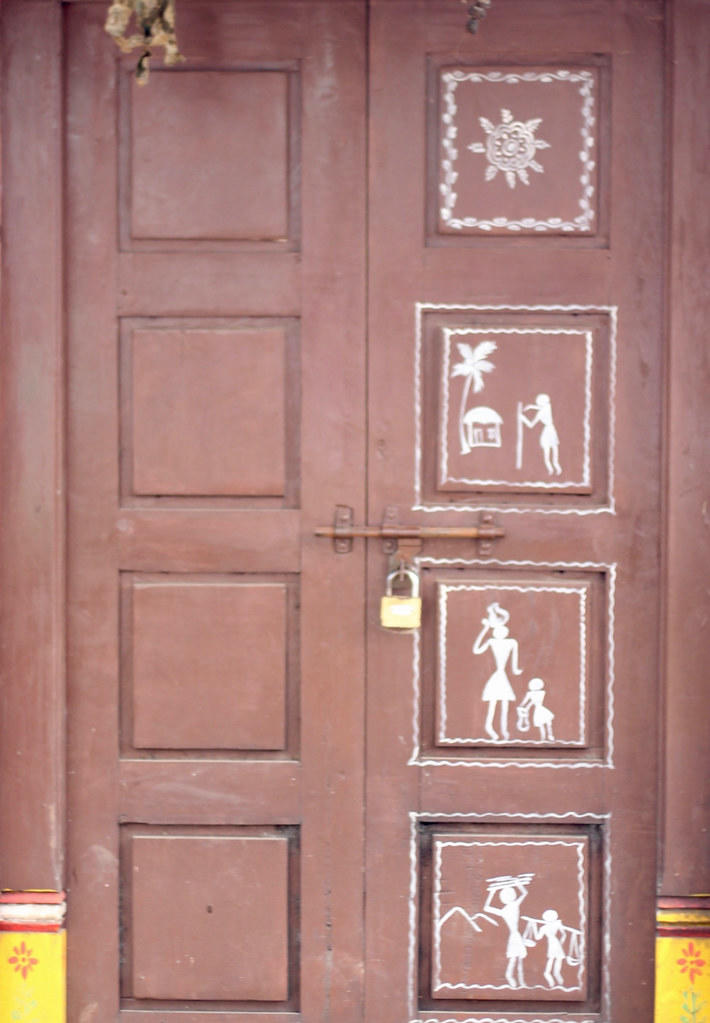
What is warli art?
The Warli tribe in Maharashtra, India, is the source of the traditional art form known as warli painting. Paintings by Warlis date back over 3000 years to the prehistoric era. An indigenous tribe known as the Warlis lives in the untamed areas of the Western Ghats mountain range, which runs parallel to India's western coast.
Warli paintings are known for their minimalism and simplicity. Only two colors—white and red, white and brown, or white and black—are used in the paintings. In India, warli paintings are regarded as among the earliest types of art. Natural pigments were initially used to create the paintings on the walls of the Warli dwellings. It wasn't until a few Indian artists found it in the 1970s that the art style became widely known to the outside world.
From its western frontiers to its east, India is home to some of the most ancient folk art forms, including the Buddhist Thangka paintings.
To which state is warli painting indigenous?
The tribal inhabitants of India's North Sahyadri Range primarily create the warli painting style. Cities like Dahanu, Jawhar, Talasari, Palghar, Mokhada, and Vikramgadh in the Palghar district are included in this range. Maharashtra is the birthplace of this tribal art form, which is still practiced today.

